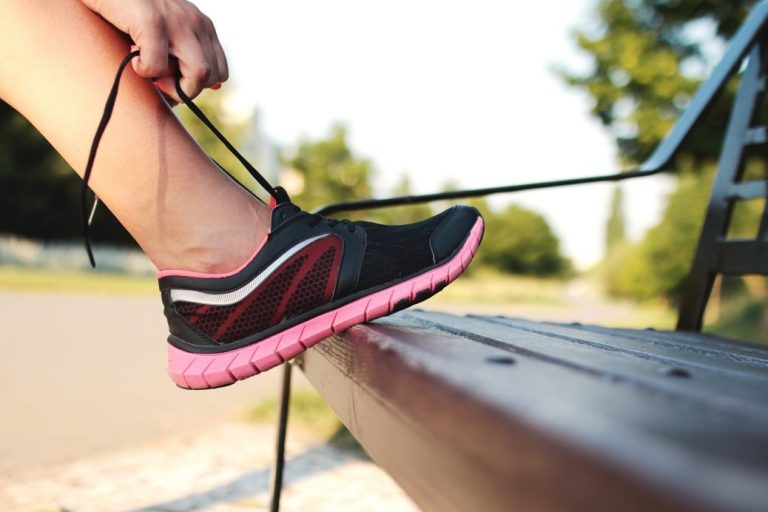Coaches Corner: Complementary Workouts for Running
This Coaches Corner is brought to you by Ann Edwards of Elite Sports. Ann Edwards is a fully qualified personal trainer. She has been helping people in the field of bodybuilding and fitness for more than a decade using her nutrition and physical therapy background. Learn about complementary workouts for running in this article!
Modern-day fitness enthusiasts understand that for effective training, they will have to do more than running. Running is itself a vigorous activity, but when combined with strength or endurance training, the sky is the limit.
Running Benefits
Running is one of the best ways of strengthening the cardiovascular system & improving circulation while building a strong foundation for the rest of your fitness activities. Working out, in general, develops your muscles, tones your body, and helps in lowering body fat. This means your body gets to burn fat effectively.
Cross-training is an efficient way of conditioning various muscle groups of your body. It helps in developing athletic skills, reduces boredom, and maximizes the workout benefits. It allows you to distribute the stress placed on specific muscle groups that can happen if you are too much into a single activity.
As you run, you primarily engage the legs and arms. It’s the same if you are running long slow distance runs or quick routine jog, but for professional or high-intensity running, that’s cross-training. Cross-training is done to complement the main sport.
Running is a unilateral exercise—incorporating other unilateral workouts, like lunges, along with your strength-training sessions would be beneficial. Cross-training is the best universal strategy when it comes to improving your athletic performance, balance, mobility & overall fitness. It incorporates various workouts that target both your heart rate and body muscles. It challenges multiple muscle groups while engaging slow & fast twitch muscles.
Do Strength Training & Running Complement Each Other?
Cardio activities such as running can be intimidating, stressful, & possibly confusing. Yet they can also be inspiring and rewarding. You will get the benefits that you want for your body & mind. How you perform during your workout session & how you optimize them for reaching your goals play a great role.
Running is one of the more vigorous forms of cardio. It takes your heart rate to its maximum limits. While performing cardio, you must make sure to keep your heart rate elevated to receive all of the intended benefits. Your target heart rate depends upon your weight & height.
A lot of people have the misconception that strength training is for building huge muscles, but that’s not entirely true. Strength training is the center of an amazing fitness routine. You can exert force. Lifting weights helps you in determining how much you can exert over time. Strength training teaches your body how to get strength from the muscles and skeletal system.
Cardio & strength training complement each other. Cardio helps in building your heart rate and makes it stronger so it can withstand heavy workouts. While strength training enables you to burn calories & keeps the unwanted weight off. This is a perfect example of complementary workouts for running.
Finding a balance between cardio and strength training depends on your fitness level. Weight training is enough to increase your metabolism so you can run for longer and more intense sessions. A moderate option is you can run for 3-5 days per week of moderate-intensity and perform strength training for 2-3 days, engaging 8 to 10 major muscle groups.

What Are Your Goals?
The first thing that you must clear up your mind about is what is your ultimate goal? Most people do not even set them. Running is an activity that you enjoy itself, and love the benefits it offers. But seeking the “best” training has to be more than that. Better in terms of the following traits: Aerobic capacity, muscular endurance, stamina, strength, mobility, flexibility, and overall balance. Most of the runners have the goal of becoming better at it.
Perhaps your goals include trimming your waistline, losing fat, muscle toning, etc. For any of those reasons, cross-training is the best approach. Incorporating different workouts into your training regimen can give you the following benefits:
- Help to ramp up your metabolism
- It keeps you mentally active & motivated to conquer the weight loss goals
- It gives sore muscles proper time of recovery, helps in preventing burnout & fatigue
- It gives the body fat-burning & body-sculpting benefits by coupling cardio exercise with calorie-burning perks.
Complementary Workouts for Running
After getting in your workout clothes, you can perform the following workouts to compliment your running activity.
Cycling
You must have heard that running is bad for your knees. Well, researchers state something opposite. Running helps in increasing your knee cartilage. Incorporating cycling into your training routine can be an amazing low-impact way to stay consistent with cardio and also gives your joints a good break. Plus, if you hate speed work that you must do on the running track, interval-based cycling will be great for jazzing up your routine.
Weight Lifting
Adding weightlifting to your running training will take it to the next level. Studies show that strength training helps in increasing the V02 max and speed. Taking out time for weight lifting won’t only improve your running form but plays a great role in avoiding injury. A perfect approach for beginners is adding 2-3 days of lifting to your running regimen. You can start by performing lower reps and lightweight and gradually increase them.
Pilates
Any workout can be a game-changer when combined with increasing full-body strength. Pilates especially trains the muscular fibers that are engaged directly with running activity. Running recruits both your slow & fast-twitch muscle fibers, they get used up for explosive and dynamic movements. Pilates helps in building muscular endurance & strength.
Yoga
Stretching plays a significant role for runners. Most people think that yoga is about doing flexible poses for elongating muscles. But this isn’t all of it. Yoga gets you moving for your next run. Help with regulating your breaths and muscles stretching while leading to faster recovery. It gives a perfect opportunity to loosen up muscles that you require to increase your range of motion. This helps you in optimizing your performance in different athletic activities. It heats your body, stimulates your lymphatic system, and helps with flushing toxins from the body.
Conclusion
Cross training with complimentary workouts for running is imperative to prevent running injuries and maximize your running capabilities. They also provide a nice break from the pounding of the running road. Whatever you choose, find some workouts to add to the mix to achieve your running or overall fitness goals.






